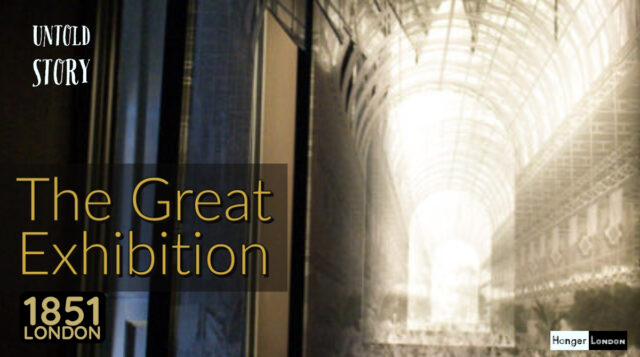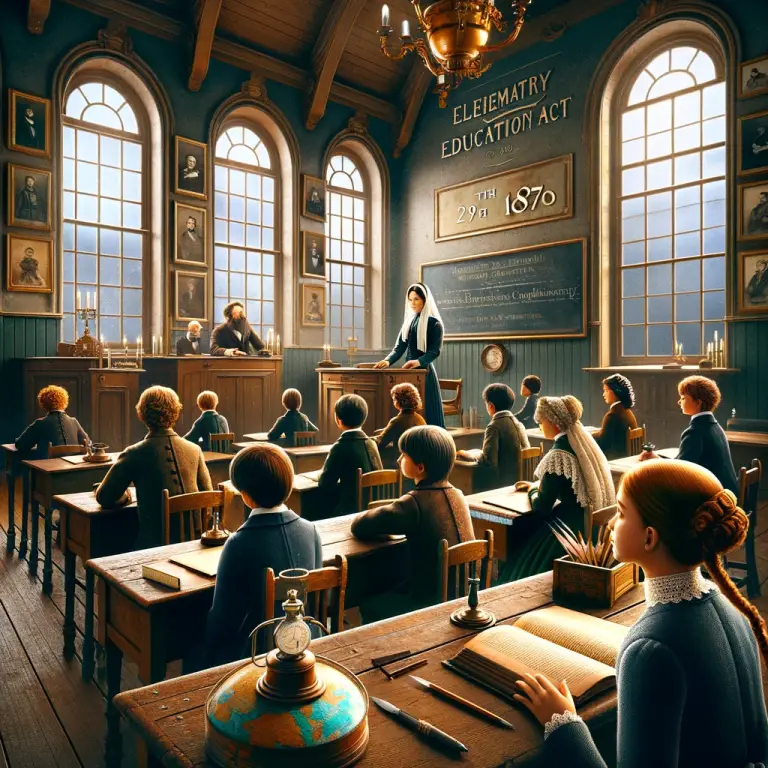Prince Albert has always been associated as the mastermind behind The Great Exhibition, but as with all great things, who actually were the person behind the vision of Britain’s greatest industrial showcase of 1851. We explore the minds behind the vision.
What Was The Great Exhibition of 1851
In 1851, on May 1st, Hyde Park in London was set to hold an event that would come to be known as ‘The Great Exhibition’. Its grandeur and scale were so impressive that even 170 years later, the occasion is firmly embedded in the collective consciousness of Britain. While you may not be able to recall the British Prime Minister at the time, you most certainly would have heard of the Great Exhibition of 1851. Its aim was clear and straightforward: to present the world with a display of British designs, inventions, and advancements. This was the Victorians at their finest, showcasing their ideas, planning, and industrial design.
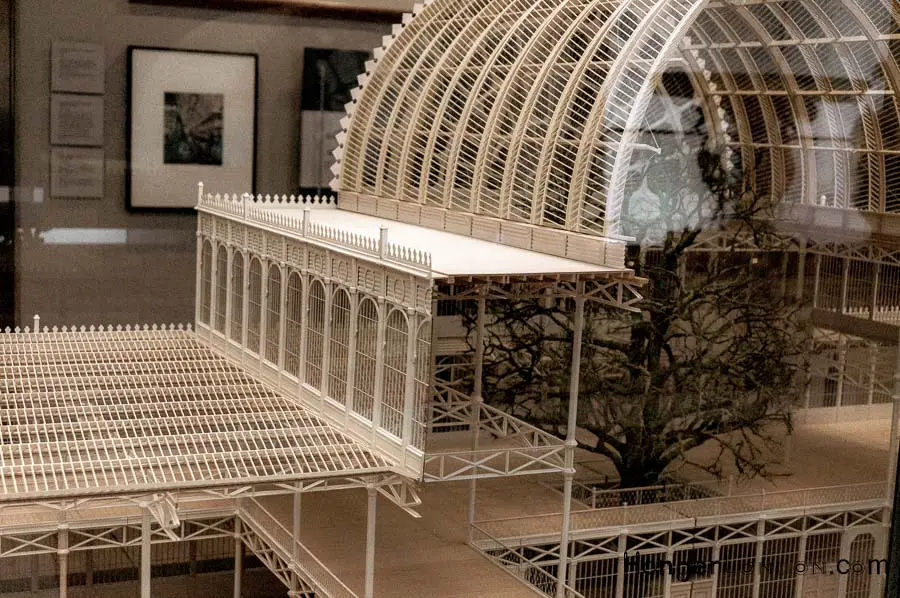
The Society for the Encouragement of Arts, Manufactures and Commerce
The Society for the Encouragement of Arts, Manufactures and Commerce was founded in 1754, with a Royal grant in 1908 to use the name Royal in the name, and would go on to become known as the Royal Society of Arts, or RSA. Henry Cole was the editor of the Journal of Design as well as a council member of the Society. In this capacity, he was introduced to Prince Albert and struck up a good relationship. It was Henry Cole’s view of the French ‘Industrial Exposition’ of 1844 that created the conversation with Albert to back the idea for a British version.
The Great Exhibition can be said, came about with the input and work of Henry Cole, George Wallis, Francis Henry, Charles Dilke and members of the Royal Society for the Encouragement of Arts, Manufactures, and Commerce, and, of course, Prince Albert.
Who built the Great Exhibition Hall?
In the mid-1800s Prince Alberts’s vision posed a real problem for Victorian engineers, just how do you build a structure, that can house almost 1 million square feet of exhibition space, build it on a central London park, and then after the exhibition is over, move the whole structure to South London. The solution was in the form of Architects Joseph Paxton and Owen Jones who designed the large glass greenhouse structure.
Great Exhibition Hall size compared
The exhibition space housed over 14,000 exhibits in an area of some 990,000 square feet. In comparison the Olympia Exhibition Centre in West London is 172,000 square feet. You would have to find the modern-day Excel centre which offers 1.07 million square feet on a 100-acre site in East London’s docklands to something of comparable capacity. Let’s not forget, the Excel Centre is a complex of buildings and you have the challenge to move it across London.
The Miracle of the Great Exhibition Glasshouse
The great glass structure was 1,848 feet long by 408 feet wide. In the centre of the hall, a fountain centrepiece was 27 feet in height, with two tons of Pink Glass and became a meeting point for visiting Victorians. The Display area extended from around 10 miles and some 100,000 objects were on show. by 15,000 or more contributors. The hall was supported by WC restrooms, refreshments, lost property and a police stand.
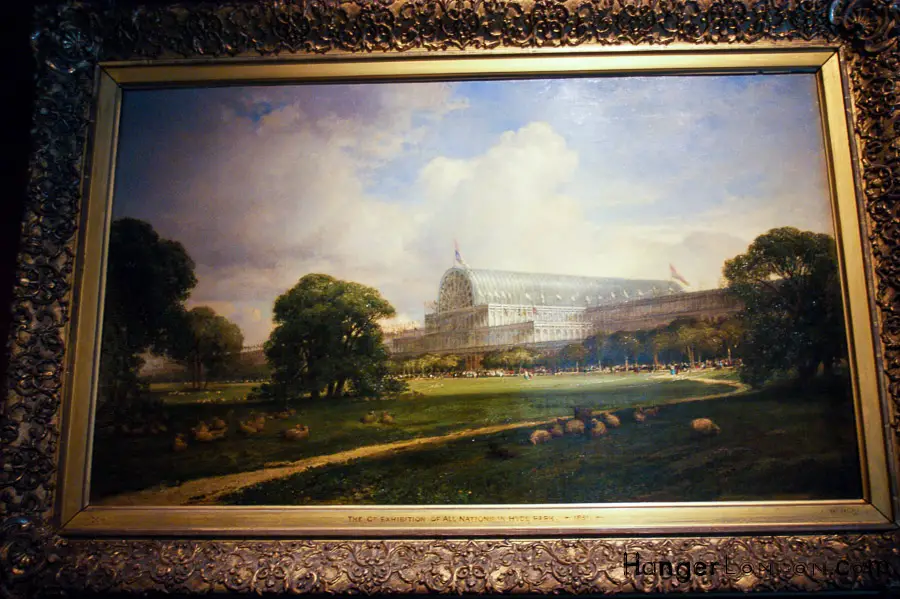
We can find a Great painting showing the gathering of people around the Queen at the V&A museum by artist Henry Courtenay Selous (1803-1890), Queen Victoria opened the exhibition.
Leading lights of the time like Charlotte Brontë, Charles Darwin, Charles Dickens, George Eliot, Lewis Carroll, Tennyson
The Great Exhibition display areas explained:
The British Empire section took up half the exhibition.
Axminster Carpets
Axminster Carpets were among the exhibits at the Great Exhibition of 1851. These carpets were produced in the town of Axminster in Devonshire, England, and were renowned for their high quality and intricate patterns. They were particularly popular in the homes of the wealthy and were often used in grand halls and ballrooms.
printing machine capable of 5,000 copies in an hour
Another fascinating exhibit at the Great Exhibition was a printing machine capable of producing up to 5,000 copies in an hour. This was a significant development in the printing industry, as it allowed for mass production of printed materials such as books, newspapers, and magazines. This innovation greatly increased the accessibility of information and helped to spread knowledge and ideas throughout society.
Sheffield blades
Sheffield blades were also showcased at the Great Exhibition. These blades were produced in the city of Sheffield, which was famous for its high-quality cutlery and silverware. The blades were made using a special process that involved hardening and tempering the steel to create a sharp, durable edge. They were highly prized by chefs and other professionals who required precision cutting tools.
textile machines & textiles
Textile machines and textiles were another major focus of the Great Exhibition. The exhibition featured a wide range of machines used in the textile industry, including spinning machines, looms, and knitting machines. The textiles on display included fabrics of all kinds, from silk and cotton to wool and linen. This exhibit highlighted the importance of the textile industry in the 1850s and the significant advancements being made in textile manufacturing.
steam hammer
The steam hammer was also showcased at the Great Exhibition. This powerful machine was used in the manufacturing of metal goods, such as railway tracks and machinery parts. It worked by using steam to power a piston, which would then strike a piece of metal with great force, shaping it into the desired form. The steam hammer revolutionized metalworking and greatly increased the efficiency and speed of production.
hydraulic press that had constructed bridges
Another impressive exhibit at the Great Exhibition was a hydraulic press that had been used to construct bridges. This machine worked by using hydraulic pressure to compress steel plates together, forming the structural elements of the bridge. This exhibit highlighted the important role that engineering and construction played in the Industrial Revolution and showcased the advancements being made in these fields.
raised ink that the blind could feel
An exhibit that was particularly innovative was raised ink that the blind could feel. This printing technique allowed visually impaired people to read written material by using raised ink that they could feel with their fingertips. This was a significant development in accessibility and helped to increase literacy rates among people with visual impairments
bicycles
Bicycles and carriages were also featured at the Great Exhibition. These modes of transportation were becoming increasingly popular in the 1850s, and the exhibition showcased the latest designs and innovations in these fields. Agricultural machines were also displayed, highlighting the importance of farming and agriculture in the 19th century.
carriages
Carriages were an important part of transportation in the 1850s, and they were showcased at the Great Exhibition. The exhibit included a variety of carriages, from simple carts to elaborate carriages used by royalty. Visitors could admire the craftsmanship and design of these vehicles, which were often decorated with intricate carvings and fine upholstery.
agricultural machines
Carriages were an important part of transportation in the 1850s, and they were showcased at the Great Exhibition. The exhibit included a variety of carriages, from simple carts to elaborate carriages used by royalty. Visitors could admire the craftsmanship and design of these vehicles, which were often decorated with intricate carvings and fine upholstery.
railway locomotive
The railway locomotive was one of the most significant inventions of the 19th century, and it was a major highlight of the Great Exhibition. Visitors could see the latest locomotives on display, including the famous Rocket, which won the Rainhill Trials in 1829. The exhibit showcased the power and speed of these machines, which were revolutionizing transportation and commerce in the UK.
steam engines
Steam engines were another major exhibit at the Great Exhibition. These machines had a significant impact on industry and manufacturing in the 1850s, and visitors could see the latest models on display. The exhibit included stationary engines used in factories, as well as portable engines used in agriculture and transportation.
UK Furniture
UK furniture was also showcased at the Great Exhibition, reflecting the country’s long tradition of furniture making. Visitors could see a variety of furniture styles, from ornate and elaborate to simple and functional. The exhibit showcased the craftsmanship and design of British furniture makers, who were known for their skill and attention to detail.
A fire engine from Canada
The Canadian fire engine was an interesting exhibit at the Great Exhibition of 1851. It was a steam-powered fire engine, which was a relatively new invention at the time. The engine was built in Montreal, Canada, and was designed to pump water at high pressure to extinguish fires. It was a significant advancement in firefighting technology and was the first steam-powered fire engine to be exhibited at an international exhibition. The Canadian fire engine was admired by visitors for its innovative design and impressive capabilities. The exhibit was a testament to the ingenuity of Canadian engineers and highlighted the importance of new technology in public safety. The Canadian fire engine was an important representation of Canada’s contributions to technological progress and innovation at the Great Exhibition.
Colt firearms from the Colt gun company represented the USA
The Colt firearms from the Colt gun company were a significant exhibit at the Great Exhibition of 1851. Colt firearms, especially revolvers, had gained a reputation for their reliability and were in high demand around the world. The exhibit showcased the latest models of Colt firearms, including the Colt Walker and the Colt Navy revolver, which were some of the most popular handguns of the time. The exhibit also highlighted the precision and craftsmanship that went into making these firearms, which were produced using advanced manufacturing techniques.
The Colt firearms exhibit was a testament to the ingenuity and innovation of American industry, and it attracted the attention of visitors from around the world. The exhibit was controversial, however, as some visitors objected to the display of deadly weapons at an event promoting peace and international cooperation. Nonetheless, the Colt firearms exhibit remains an important part of the history of the Great Exhibition of 1851.
Items That survive today that were in The Great Exhibition of 1851
Innovation and techniques are what this table was about, materials such as mahogany, limewood gilded leather bullrushes, and flowers, cast plaster birds. They believe George J. Morant, London manufactured the base, the top may have come from Rome by Chevalier Barberi, tiny mosaic feature to the top.
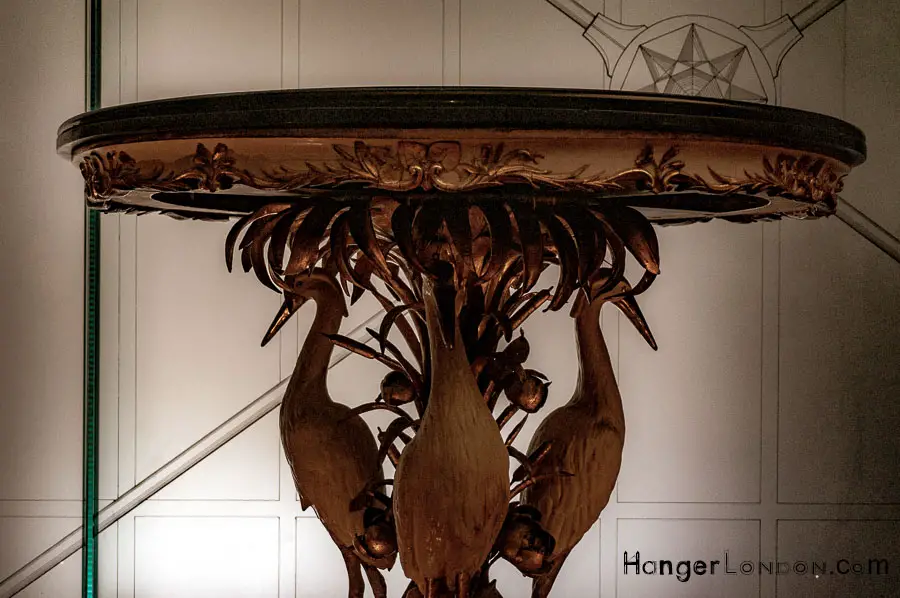
Glass, Stoneware, porcelain
Made around 1851 by Charles Meigh and Co these two vases are in a delicate pink colour, which can not be seen too well because the photo has been lightened afterward, to show the details of the work that went into it. All the items on display are in dark surroundings to protect them so one can only imagine what they must have looked like inside the crystal palace in natural daylight when they were new.
They were often used as advertising pieces that could showcase the manufacturer and as an image for people writing and drawing about the exhibition. A perfect way to artistically sum up the art and design and tribute to the masters behind the exhibition, in the way of their painted portraits on the vases and Crystal Palace itself
Materials used were stoneware and enamel and gilding.
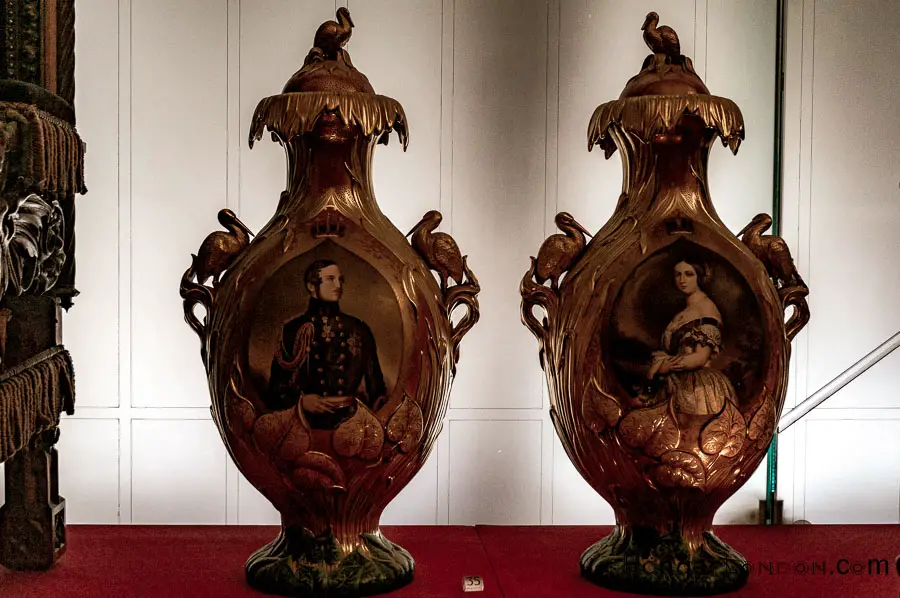
Copeland & Co
Copeland & Co was a highly regarded pottery manufacturer that showcased its products at the Great Exhibition of 1851. Their exhibit included a wide range of pottery items, including tableware, vases, and decorative pieces. Copeland & Co was known for their fine craftsmanship and attention to detail, and their products were highly sought after for their beauty and quality. Their exhibit at the Great Exhibition was a reflection of the company’s commitment to excellence, and it showcased the latest designs and techniques in pottery making. Visitors to the exhibition were impressed by the elegance and beauty of Copeland & Co’s products, and the company’s exhibit played a significant role in establishing its reputation as one of the leading pottery manufacturers of the 19th century.
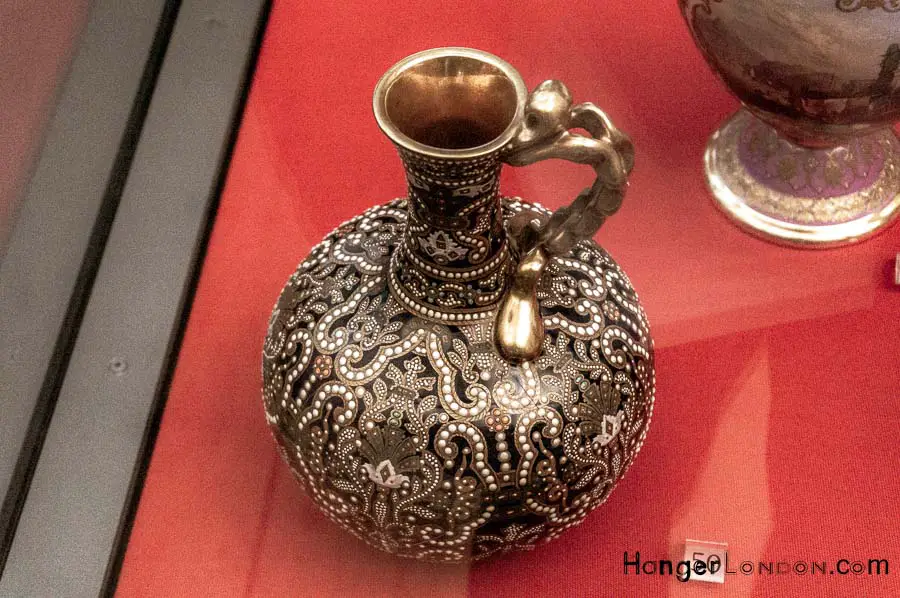
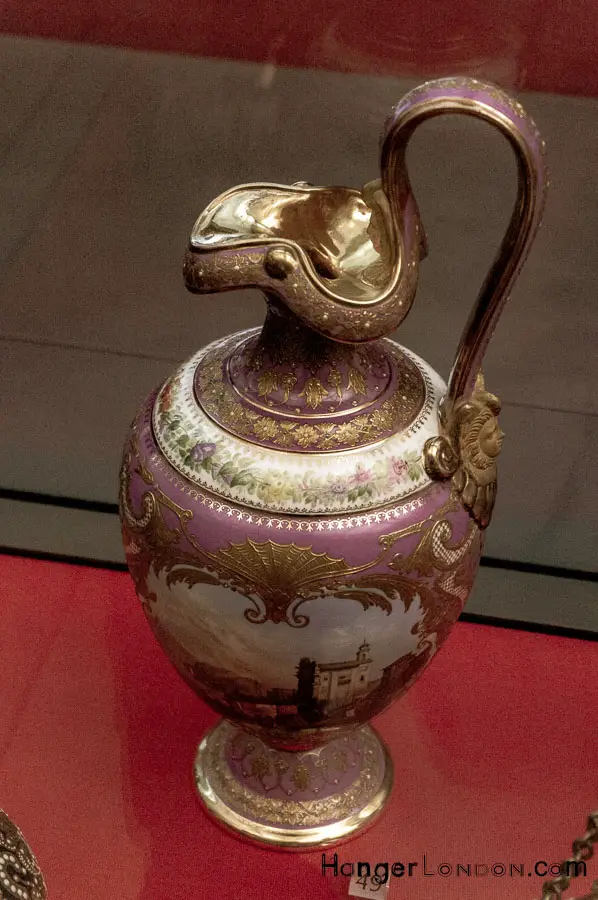
India section at the Great Exhibition
The India section at the Great Exhibition of 1851 was one of the most significant exhibits, showcasing the country’s rich culture, history, and craftsmanship. The exhibit featured a vast collection of artefacts, including textiles, jewellery, sculptures, paintings, and decorative items. The Indian section was designed to provide visitors with an immersive experience, showcasing the diverse traditions and customs of the country.
The India section featured exhibits that showcased traditional Indian crafts, such as pottery, metalwork, and woodworking. The exhibit included examples of intricate filigree work, as well as sculptures made of ivory, sandalwood, and other materials.
The India section at the Great Exhibition of 1851 provided visitors with a unique opportunity to experience the richness and diversity of Indian culture. It was a testament to the creativity and skill of Indian artisans and craftsmen and played a significant role in promoting cultural exchange and understanding between India and the rest of the world.
- Throne of Ivory carved, adorned pearls and rubies
Koh-i-Noor diamond. pre-cut and placed in the Crown Jewels.
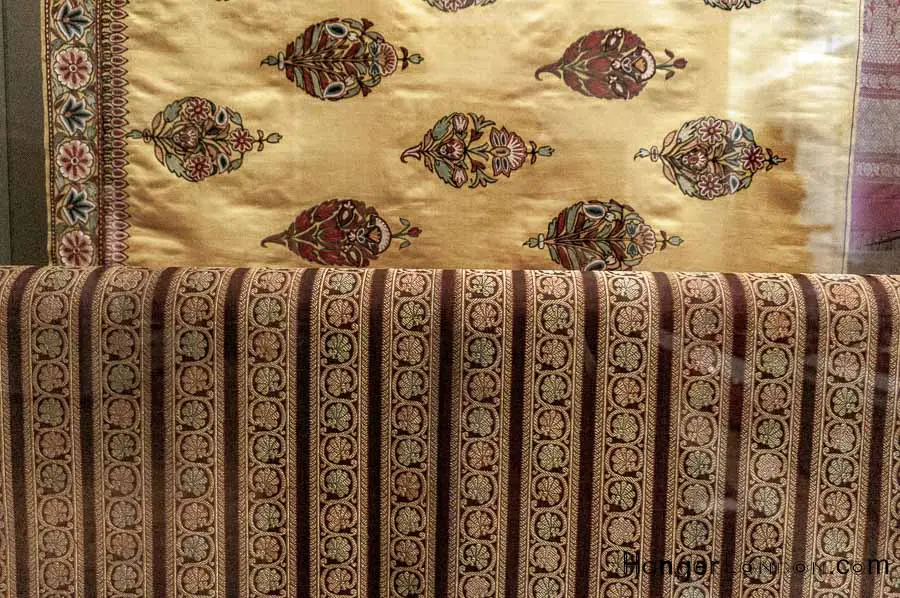
Rose Water Sprinkler Indian enamel
The Rose Water Sprinkler Indian enamel was an exquisite exhibit at the Great Exhibition of 1851. It was a bottle made of blue-coloured glass and was adorned with intricate silver engravings. The bottle was used to sprinkle rose water, a popular ingredient in Indian cuisine and culture, and was a symbol of luxury and refinement. The enamel work on the bottle was done by skilled craftsmen from India, who were renowned for their mastery of this art form. The exhibit showcased the beauty and elegance of Indian decorative arts, and it was highly regarded by visitors to the exhibition. The Rose Water Sprinkler Indian enamel was a testament to the creativity and artistry of Indian artisans and was an important representation of Indian culture at the Great Exhibition.
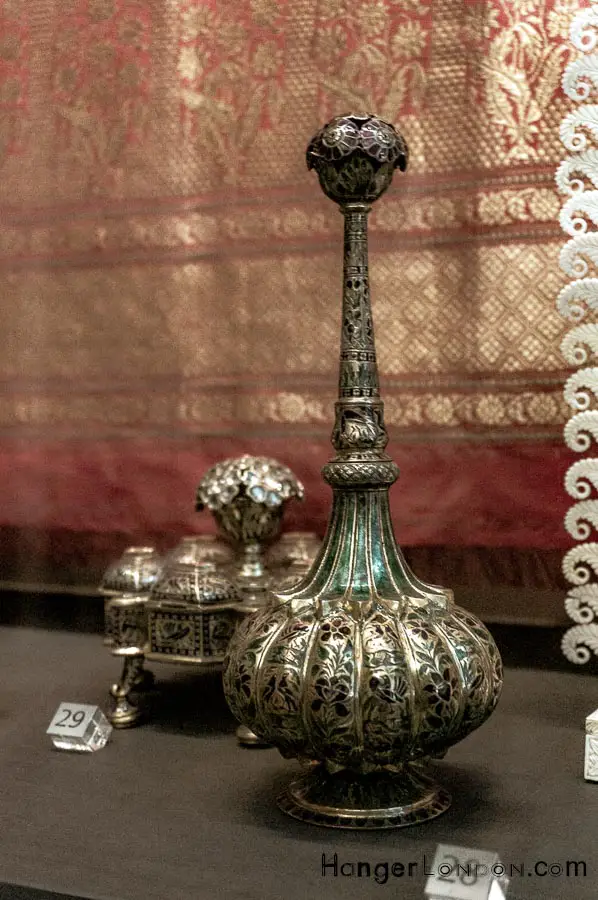
They made this shrine for the exhibition, from West Bengal India. Thought to be depicting Durga the 10-armed goddess version of Hindu Devi. Being a warrior here defeating the Buffalo Mahishasura.
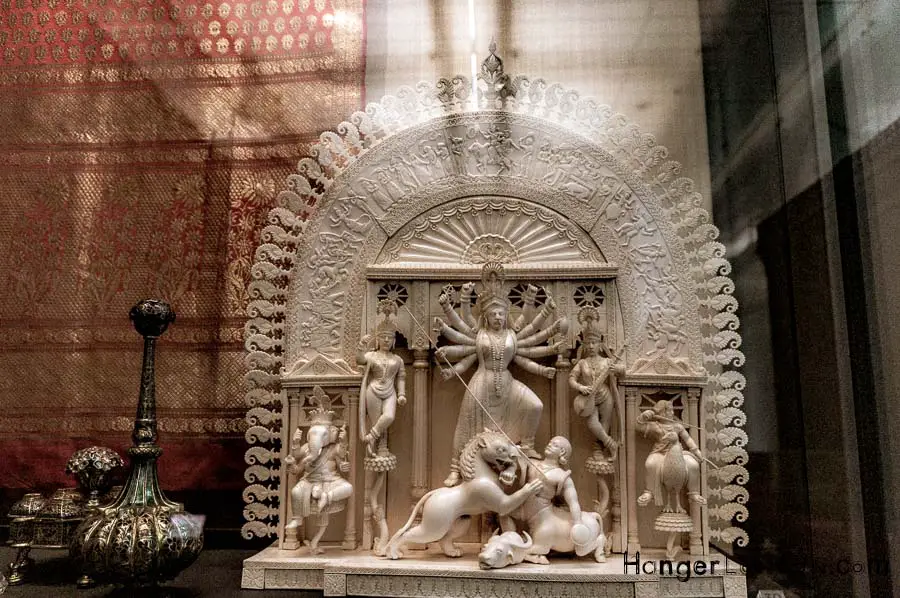
France at the Great Exhibition
Sevres porcelain
Sevres porcelain was one of the most exquisite exhibits at the Great Exhibition of 1851. The porcelain was made in France and was highly prized for its beauty and quality. Visitors could admire the delicate designs and intricate patterns on the porcelain, which was often decorated with flowers, birds, and other natural motifs. The exhibit showcased the skill and artistry of French porcelain makers and was a testament to the importance of decorative arts in the 19th century.
They made this item below in 1850 in the UK to emulate the French style of the Sèvres porcelain factory. Fine Gilt delicate pink colour was fine ground, a delicate landscape enamel painting, and gilded.
silk
Silk was also prominently featured at the Great Exhibition, reflecting the importance of this material in the textile industry. Visitors could see a variety of silk fabrics, from delicate gowns and shawls to heavy draperies and upholstery. The exhibit showcased the versatility of silk and the skill of silk weavers, who were highly regarded for their craftsmanship and attention to detail.
enamels
Enamels were another popular exhibit at the Great Exhibition, showcasing the beauty and durability of this art form. Visitors could see a variety of enamel objects, from jewelry and boxes to vases and plaques. The exhibit showcased the skill of enamel artists, who used a combination of pigments and heat to create vibrant and long-lasting designs.
tapestries
Tapestries were also prominently featured at the Great Exhibition, showcasing the importance of this art form in European culture. Visitors could see a variety of tapestries, from large wall hangings to small decorative pieces. The exhibit showcased the skill of tapestry weavers, who used a combination of yarns and techniques to create intricate designs
textile machinery
Finally, textile machinery was a major exhibit at the Great Exhibition, reflecting the importance of this industry in the 19th century. Visitors could see a variety of textile machines, from spinning jennies to power looms. The exhibit showcased the latest technology and innovations in the textile industry, which were revolutionizing manufacturing and production.
Russia on show at the Great Exhibition
At the Great Exhibition of 1851, Russia made a significant impression with its displays of impressive artistry and craftsmanship. The exhibit included huge urns and vases made of porcelain and malachite, two materials for which Russia was famous. The urns and vases were intricately decorated with gold and silver, and their sheer size was awe-inspiring. Visitors were struck by the skill and artistry of Russian craftsmen, who had mastered the difficult art of working with these precious materials.
Another highlight of the Russian exhibit was its collection of furs and sledges. In the harsh climate of Russia, furs and sledges were essential for survival, and the exhibit showcased the beauty and functionality of these items. Visitors were impressed by the intricate patterns and designs of the furs, which were often used as symbols of wealth and status. The sledges, meanwhile, demonstrated the ingenuity and practicality of Russian design, as they were specially adapted to navigate the country’s snowy terrain.
The Russian exhibit also included a display of Cossack armor, which showcased the military prowess and traditions of Russia. The Cossacks were a group of skilled warriors who were renowned for their horsemanship and bravery, and their colorful uniforms and weapons were a highlight of the exhibit. The armor on display, meanwhile, was a testament to the skill and craftsmanship of Russian metalworkers. Visitors were impressed by the intricacy and detail of the armor, which demonstrated the importance of military prowess and defense in Russian culture.
Chile at the Great Exhibition
Chile was one of the countries that participated in the Great Exhibition of 1851, and it showcased its rich natural resources and cultural heritage. One of the notable exhibits from Chile was a display of copper and silver ores, which demonstrated the country’s significant mining industry. The exhibit included samples of copper and silver extracted from Chilean mines, highlighting the country’s importance as a global supplier of these metals. Chile also exhibited samples of its wine and agricultural products, which were highly regarded for their quality and taste.
Another interesting exhibit from Chile at the Great Exhibition was the 50kg of gold on display. This exhibit demonstrated the country’s significant gold mining industry, which was booming in the 1850s. The 50kg of gold was a testament to Chile’s natural resources and the skills of its miners. The exhibit was an impressive sight, and it attracted a lot of attention from visitors to the exhibition. The display of Chile’s gold at the Great Exhibition showcased the country’s growing economic power and its important role in the global economy.
Switzerland in the Great Hall
Switzerland was a significant participant in the Great Exhibition of 1851, and the country’s pavilion showcased its many cultural and industrial achievements. Switzerland’s exhibit was located in the north transept
Swiss watches were one of the most highly regarded products on display at the Great Exhibition of 1851. Swiss watchmakers had already gained a reputation for their precision and innovation, and the exhibition gave them a platform to showcase their latest designs and advancements. Visitors could see a variety of watches, from pocket watches to ornate wristwatches, all made with the highest quality materials and designed with intricate detail. Swiss watches were highly sought after by collectors and connoisseurs, and the Great Exhibition helped to cement their reputation as some of the finest timepieces in the world. The Swiss watch industry continued to thrive in the years following the exhibition, and it remains an important part of Switzerland’s cultural and economic identity to this day.
Where did the Great Exhibition Glass House move to?
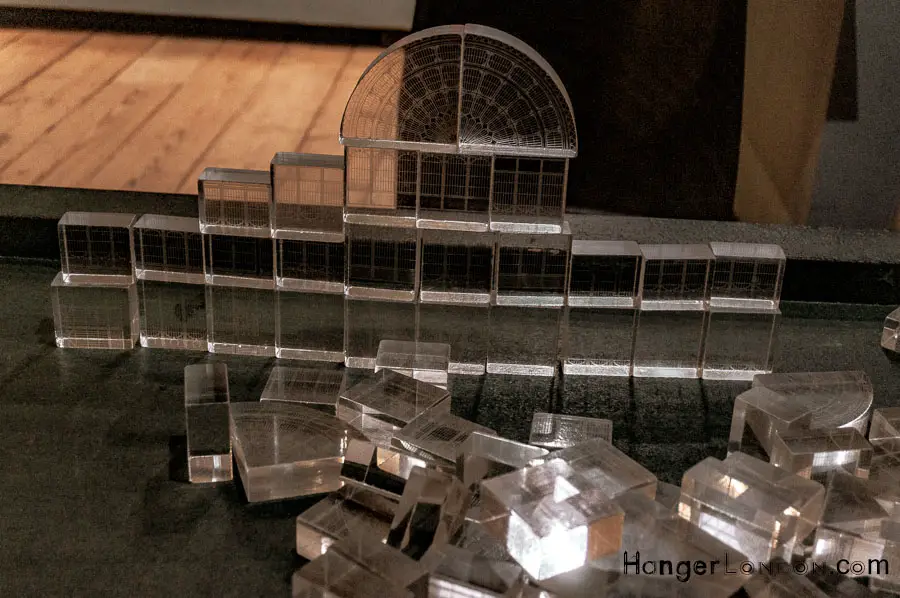
After the exhibition ended in October of the same year, there were plans to move the whole structure to another location.
Paxton had a colleague who owned Penge Place, now Crystal Palace Park in Sydenham. Work started in 1852 on the transition, Queen Victoria opened Crystal Palace on completion in 1854
During this era, designers placed model dinosaurs in the swamp area landscaped to look like they had come from prehistoric times. It is only in modern times have the dinosaurs returned to the parkland area as part of the regeneration plan.
Legacy of the Great Exhibition
The money generated by the Great Exhibition was reinvested into London by way of funding 3 of the great museums of the Victoria and Albert Museum, Natural History, and the Science Museum. It is surprising to reflect that in modern times, the public is more used to single-use projects, projects that go into debt, and projects sold at a loss.
Disasters and the end of the Great Exhibition Hall in 1936
The Palace suffered disasters in 1861 strong storms caused some disruption. As December drew to a close in 1866 a large fire destroyed a lot, but not all. Financial struggles led to bankruptcy in 1911. A new owner came to manage the situation, H. Buckland. 1936 ended its life as a huge fire broke out that spread and destroyed Crystal Palace. A few artifacts of the structure remain, sphinxes, the part statue of Sir Joseph Paxton, and some walkways, they are Grade II listed.
Maps
where to find the site of the Great Exhibition 1851 Hyde Park
where to find the site of the Great Exhibition 1851 Hyde Park
References:
Official catalogue great exhibition 1851
Stereo Photographs Portrait Gallery

